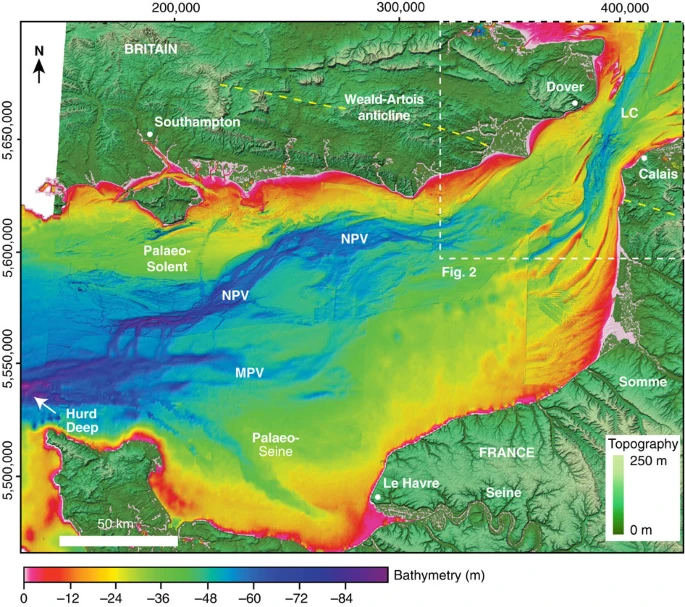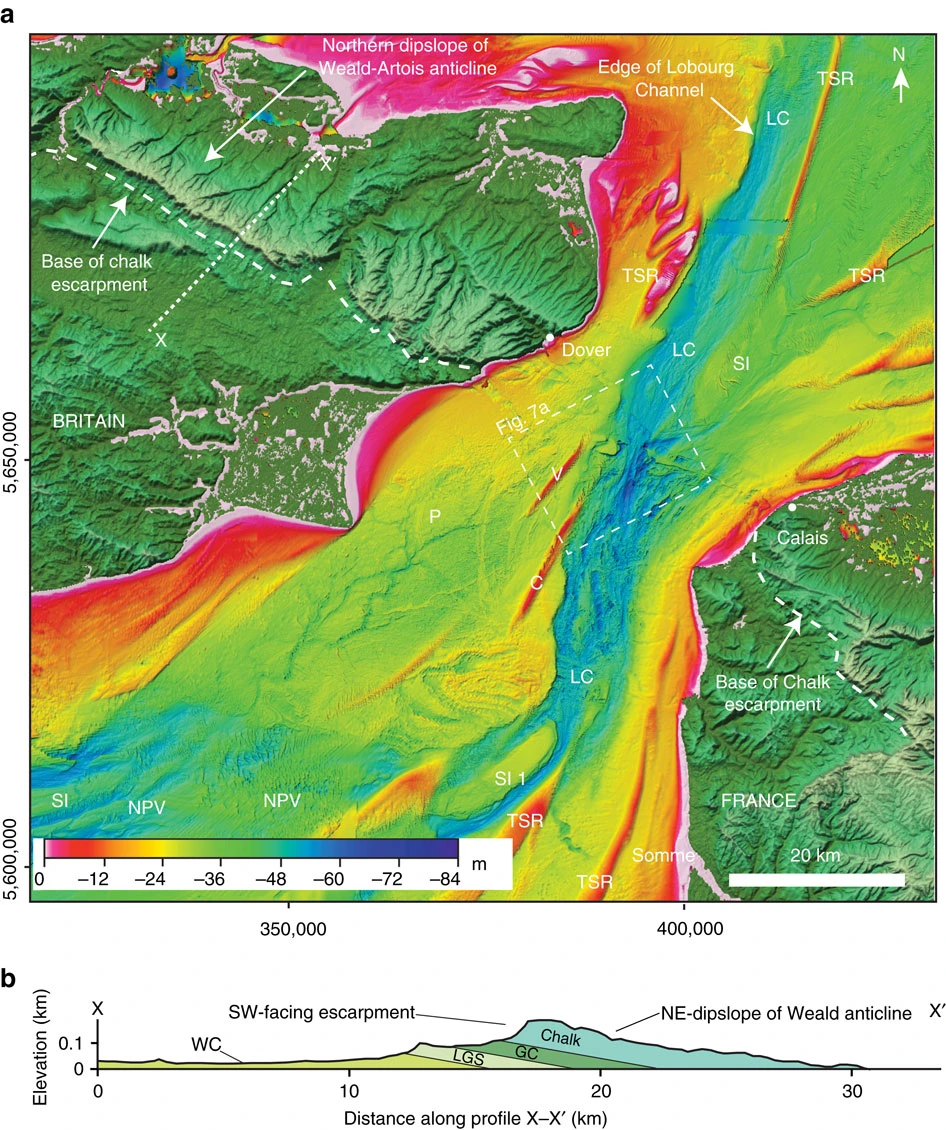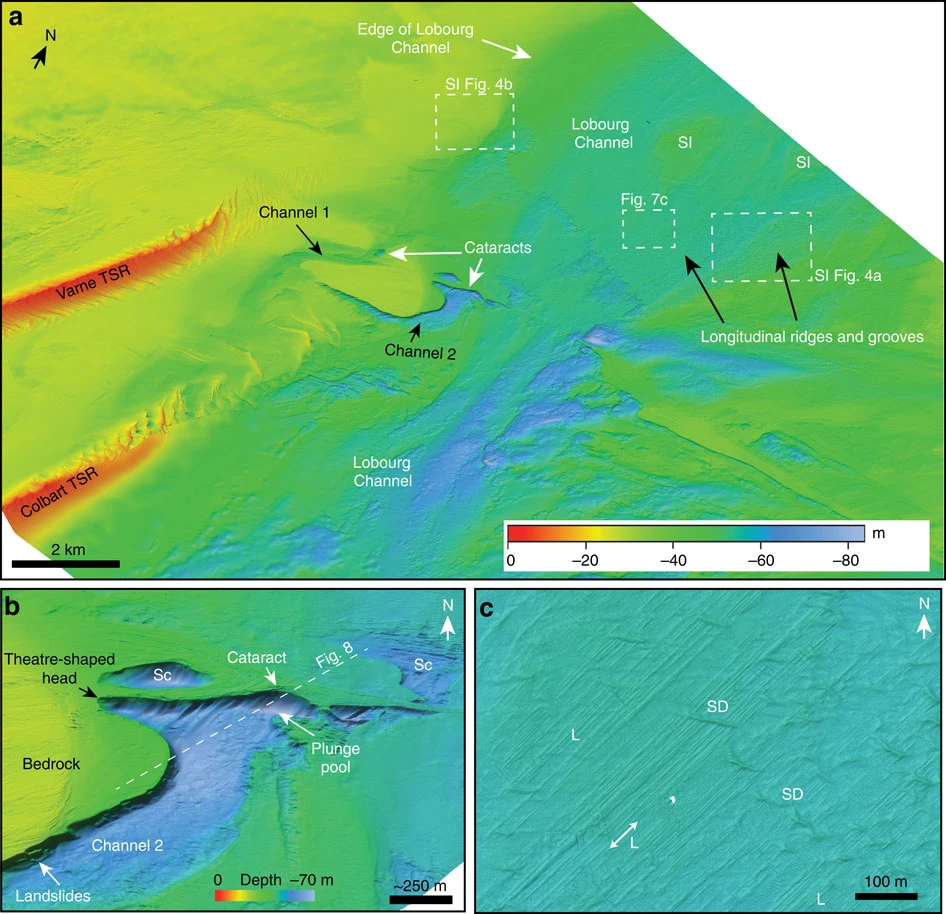- Location
- Perth, Western Australia
- Pronouns
- he/him
I've estimated what it might have cost an early Roman Emperor to build a causeway from Calais to Dover and would appreciate any feedback people might have on the estimate, and how much I might be out by. And yes I am aware that the bigger question is 'why would they want to?' but I've already got that worked out.
Assumptions (provided by Google)
Average depth Dover to Calais = 45m
Length of the required causeway = 30 km
Top width = 7m
I am proposing to follow a similar approach to that which was used to by the Romans to build the artificial harbour at Caesarea Maritima. The process involved using Pozzolana concrete which hardens in contact with seawater. Barges were constructed and filled with the concrete. They were floated into position and sunk.
The stats on the barges to be constructed are based on Caligula's "Giant Ship", a very large barge, the ruins of which were found during the construction of Rome's Leonardo da Vinci International Airport in Fiumicino, Italy, in the 1950s. The barge had a length of about 95 m) and a beam of about 21m, with a depth of 13.4 m, and could carry 1,300 tons of cargo.
I estimate they would need 3,780 ships, (4 ships high x 315 ships long x 3 ships wide). I plan to sink 3 barges at the same time, side by side and chained together. I can't find any figures on how much it would cost a Roman to build a wooden barge, but the modern price of a barge of equiv size (second hand) is $2.6 million, so 3,780 ships cost $9.8 billion. Possibly less as they wouldn't have to pay for the trees.
Cost of 1 tonne cement = $75, so 1,300 tonnes of cement = $97,500
3,780 ship loads = $368,550,000
Total cost of each barges plus concrete is roughly $10 billion, which I understand may equate to approximately 200 million denarii (see
Andy Goldsworthy in 'Caesar – Life of a Giant' apparently estimates the income of the republic’s treasury at 50 million denarii (200 million sesterces) before Pompey’s departure to the east. After his return (reorganization of the eastern provinces), the income increased to 135 million denarii. Caesar in 49 BCE imposed an exceptionally low tribute of 10 million denarii on Transalpine Gaul. Thus, at the time of the fall of the republic, the annual income of the Roman state was 145 million denarii. It is worth noting that in Rome you could live on 2-3 sesterces a day, where the cost of a tenement house was on average 60,000 sesterces, and the most magnificent properties could be bought for 2-20 million sesterces. On this basis, mentioning the creation of several additional provinces in Egypt, Mauritania, Cappadocia, the Danube area, Dacia, Britain and others, it is possible to estimate the revenues to the budget of the Roman Empire around 125 CE at about 210-250 million denarii.
So the total cost of the causeway is going to be close to the Empire's total annual budget, which if spread over 10 years is not necessarily impossible.
Any feedback would be appreciated.
Assumptions (provided by Google)
Average depth Dover to Calais = 45m
Length of the required causeway = 30 km
Top width = 7m
I am proposing to follow a similar approach to that which was used to by the Romans to build the artificial harbour at Caesarea Maritima. The process involved using Pozzolana concrete which hardens in contact with seawater. Barges were constructed and filled with the concrete. They were floated into position and sunk.
The stats on the barges to be constructed are based on Caligula's "Giant Ship", a very large barge, the ruins of which were found during the construction of Rome's Leonardo da Vinci International Airport in Fiumicino, Italy, in the 1950s. The barge had a length of about 95 m) and a beam of about 21m, with a depth of 13.4 m, and could carry 1,300 tons of cargo.
I estimate they would need 3,780 ships, (4 ships high x 315 ships long x 3 ships wide). I plan to sink 3 barges at the same time, side by side and chained together. I can't find any figures on how much it would cost a Roman to build a wooden barge, but the modern price of a barge of equiv size (second hand) is $2.6 million, so 3,780 ships cost $9.8 billion. Possibly less as they wouldn't have to pay for the trees.
Cost of 1 tonne cement = $75, so 1,300 tonnes of cement = $97,500
3,780 ship loads = $368,550,000
Total cost of each barges plus concrete is roughly $10 billion, which I understand may equate to approximately 200 million denarii (see
Andy Goldsworthy in 'Caesar – Life of a Giant' apparently estimates the income of the republic’s treasury at 50 million denarii (200 million sesterces) before Pompey’s departure to the east. After his return (reorganization of the eastern provinces), the income increased to 135 million denarii. Caesar in 49 BCE imposed an exceptionally low tribute of 10 million denarii on Transalpine Gaul. Thus, at the time of the fall of the republic, the annual income of the Roman state was 145 million denarii. It is worth noting that in Rome you could live on 2-3 sesterces a day, where the cost of a tenement house was on average 60,000 sesterces, and the most magnificent properties could be bought for 2-20 million sesterces. On this basis, mentioning the creation of several additional provinces in Egypt, Mauritania, Cappadocia, the Danube area, Dacia, Britain and others, it is possible to estimate the revenues to the budget of the Roman Empire around 125 CE at about 210-250 million denarii.
So the total cost of the causeway is going to be close to the Empire's total annual budget, which if spread over 10 years is not necessarily impossible.
Any feedback would be appreciated.




